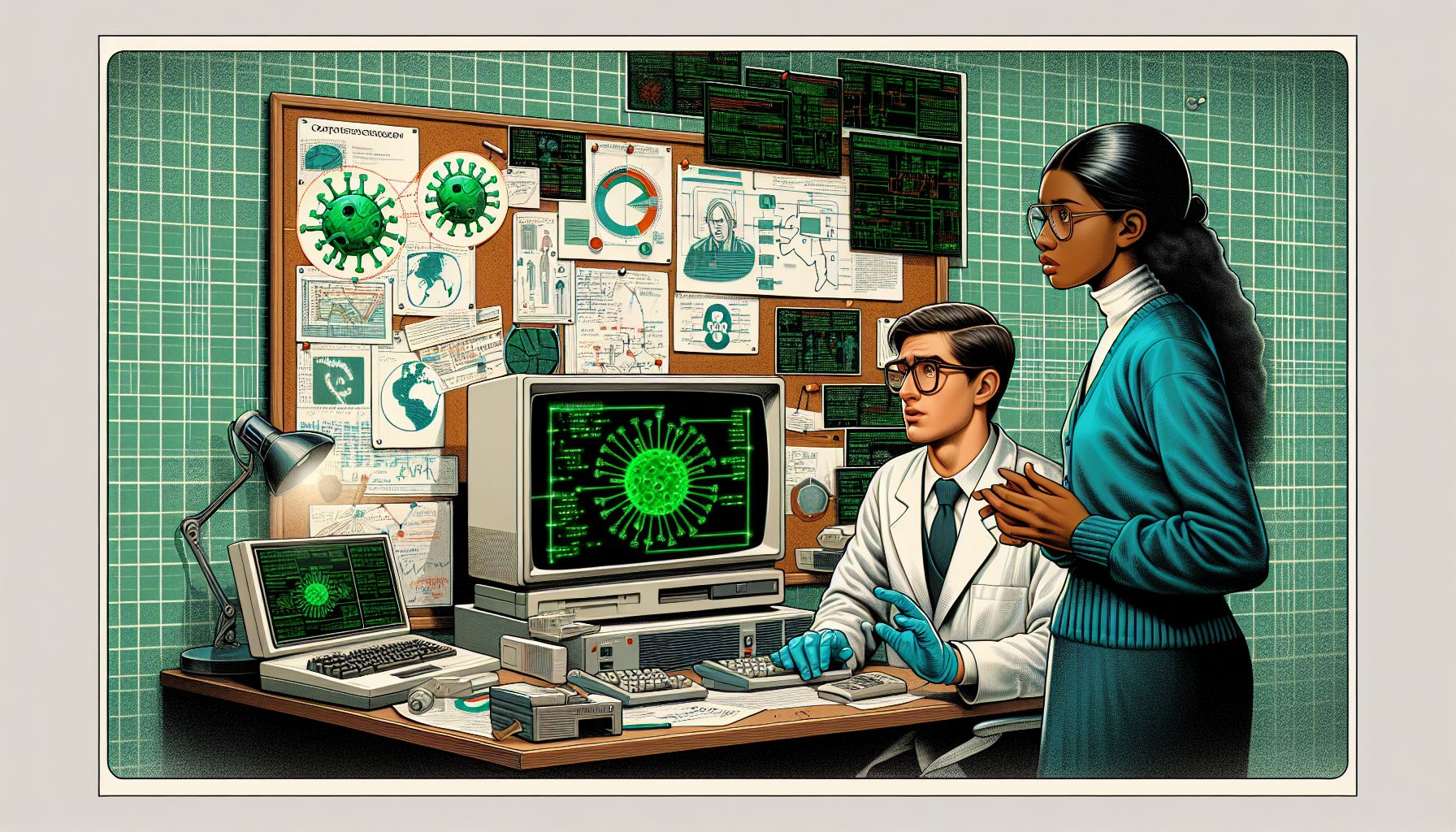📌 Let’s explore the topic in depth and see what insights we can uncover.
⚡ “Imagine a world without antivirus software, a digital wild west. Welcome to 1982, the birthplace of the first computer virus that rattled industries worldwide.”
Computers have become an integral part of our lives, transforming everything from communication to commerce. However, as the digital world expands, so does the threat of computer viruses. These malicious programs are designed to cause havoc, disrupt operations, and steal sensitive information, raising serious concerns about cybersecurity. This blog post takes a deep dive into the history and development of the first computer virus, highlighting the birth of cybersecurity concerns and the measures taken to combat them. Strap in for a journey through the past, and explore the evolution of the digital phantom that continues to haunt our screens.
🕰️ The Genesis of the Digital Nemesis: The First Computer Virus

Unveiling the Origin of Digital Diseases & Cybersecurity
The first computer virus, aptly named “Creeper,” was more of a technological experiment than a malicious threat. It emerged in the early 1970s, a time when a computer was a mammoth machine that occupied entire rooms. Bob Thomas, an engineer working at BBN Technologies, created Creeper not to inflict harm, but to demonstrate a mobile application’s ability to move across networks. Creeper was a simple program that could replicate itself and spread across a network. However, it didn’t damage the systems it infected. Instead, it merely displayed a cheeky message, “I’m the creeper, catch me if you can!” It was a playful digital sprite in the realm of ones and zeroes, but its existence marked the dawn of a new era in computing.
👾 From Playful Sprites to Digital Demons: The Evolution of Computer Viruses
The creation of Creeper sparked a wildfire of creativity among programmers. It wasn’t long until the harmless sprite evolved into a menacing digital demon. In 1981, the first destructive virus, “Elk Cloner,” was born. Unlike Creeper, Elk Cloner was designed to cause damage. It infected the Apple II operating system and displayed a poem after every 50th boot, causing inconvenience to the user. As computers became more mainstream in the 1980s and 1990s, the number and variety of viruses grew exponentially. The early viruses were often pranks by mischievous programmers. However, as the internet began to infiltrate businesses and homes, viruses started to take a more dangerous turn. They began to be used for criminal activities, such as stealing sensitive data and disrupting operations.
🛡️ The Birth of Cybersecurity: The Battle Against Digital Threats
The rise of malicious software led to the birth of cybersecurity, a field dedicated to protecting computers and networks from digital threats. In the early days, cybersecurity was relatively simple. Antivirus software was designed to identify and remove known viruses, much like a digital exterminator hunting for bugs. However, as viruses evolved, so did cybersecurity measures. Today, cybersecurity involves a broad range of practices designed to protect systems, networks, and data from digital threats. These include firewalls, encryption, intrusion detection systems, and regular software updates. Cybersecurity isn’t just about technology, though. It’s also about people and processes. Training users to recognize and avoid potential threats, such as phishing emails and malicious websites, is a crucial part of any cybersecurity strategy. Additionally, organizations need to have robust processes in place to respond to potential security incidents quickly and effectively.
🔮 The Future of Cybersecurity: Staying One Step Ahead
As technology continues to evolve, so do the threats we face. Today, we’re dealing with a host of sophisticated threats, from ransomware that encrypts your data and demands a ransom to release it, to social engineering attacks that trick users into revealing sensitive information. However, as daunting as these threats might seem, we’re not helpless. 🧠 Think of Cybersecurity as a dynamic field, and professionals are constantly developing new ways to protect our systems and data. One of the most promising areas of research is machine learning, which uses artificial intelligence to identify and respond to threats more quickly and accurately than humans could. Moreover, as more devices become connected via the Internet of Things (IoT), there’s an increasing focus on securing these devices. This includes everything from smart fridges and thermostats to industrial control systems.
🧭 Conclusion
From the playful Creeper to the destructive Elk Cloner and the myriad of threats we face today, the evolution of computer viruses has been a rollercoaster ride. It’s a testament to the ingenuity and adaptability of both the creators of these digital phantoms and the cybersecurity professionals tasked with hunting them down. As we continue to rely more heavily on digital technology, the importance of cybersecurity will only continue to grow. We must remain vigilant, educate ourselves about the potential threats, and take proactive measures to protect our systems and data. Remember, in the digital world, the best offense is a good defense. So, let’s suit up and prepare for battle, because the digital phantoms aren’t going away anytime soon.
🌐 Thanks for reading — more tech trends coming soon!
